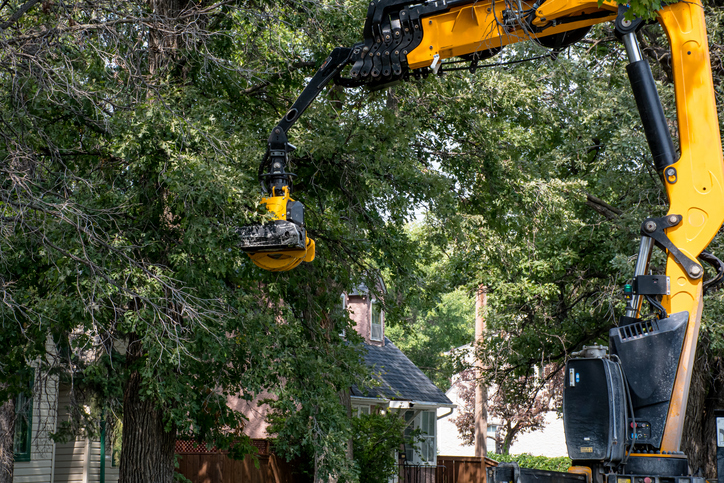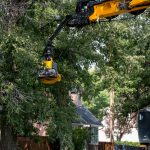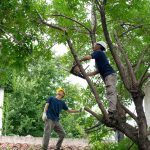Tree cutting is a critical step in many construction projects. Whether clearing land for residential, commercial, or infrastructure developments, understanding the process is essential for efficiency, safety, and compliance. Improper tree removal can lead to legal issues, environmental damage, and project delays. By following best practices and considering all relevant factors, construction professionals can ensure responsible and effective tree disposal. This article explores key considerations, including legal requirements, environmental impact, safety precautions, and best practices for efficient site clearing.
1. Understanding Legal Requirements and Permits
Before beginning any tree cutting, it is crucial to understand local laws and regulations. Many municipalities require permits for tree cutting, especially for large or protected species. Failure to obtain the necessary permits can result in fines and legal complications. Consulting with local authorities or hiring a professional arborist can help navigate the permitting process. Additionally, some areas may have restrictions on tree management to preserve green spaces and protect wildlife habitats.
2. Assessing Environmental Impact
Tree pruning can significantly impact the local ecosystem. Trees provide oxygen, prevent soil erosion, and support wildlife. Before clearing land, construction planners should conduct an environmental assessment to determine the effects on surrounding habitats. In some cases, regulations may require replanting or preservation of certain trees. Working with environmental consultants can help mitigate negative impacts and ensure sustainable development practices.
3. Evaluating Tree Health and Risk Factors
Not all trees on a construction site need removal. A thorough assessment of tree health and structural integrity helps determine which trees pose risks and which can be preserved. Dead or diseased trees can be hazardous, while healthy trees might be integrated into the landscape design. Professional arborists can assess trees and recommend the best course of action based on safety and project requirements.
4. Safety Considerations During Tree Cutting
Tree cutting involves significant risks, especially for large or unstable trees. Ensuring the safety of workers and nearby structures is a top priority. Best practices include:
- Using proper safety equipment, such as helmets, gloves, and protective eyewear.
- Employing certified professionals with experience in large-scale tree reduction.
- Implementing controlled cutting techniques to prevent accidental falls and property damage. Proper planning and execution reduce risks and ensure a smooth removal process.
5. Choosing the Right Equipment and Techniques
The choice of equipment and techniques depends on the size, location, and type of trees being removed. Common tree maintenance methods include:
- Manual cutting: Suitable for small trees and minimal impact areas.
- Mechanical removal: Heavy machinery like excavators and cranes help clear large areas efficiently.
- Controlled felling: Precision cutting techniques ensure trees fall safely without damaging nearby structures.
- Stump grinding and root removal: This process eliminates stumps and roots to prepare the land for construction. Using the right tools and techniques improves efficiency and minimizes environmental disruption.
6. Proper Disposal and Recycling of Tree Debris
Disposing of tree waste responsibly is an important aspect of land clearing. Many tree trimming companies offer recycling services to repurpose wood into mulch, lumber, or biomass fuel. Some municipalities have guidelines for handling green waste, ensuring eco-friendly disposal. Instead of burning or dumping debris in landfills, recycling promotes sustainability and reduces environmental harm.
7. Minimizing Soil Erosion and Land Degradation
Tree cutting can lead to soil erosion and destabilization if not managed properly. Removing trees exposes the land to wind and water erosion, which can negatively impact construction stability. To prevent these issues:
- Use erosion control measures like silt fences and retaining walls.
- Replant vegetation or implement ground cover to stabilize the soil.
- Proper grading techniques help maintain land integrity and protect the construction site from long-term environmental damage.
8. Collaborating with Professional Tree Maintenance Services
Hiring a professional tree maintenance company ensures compliance, safety, and efficiency. Certified arborists and tree care experts have the skills, experience, and equipment to handle large-scale projects. They can also assist with permit applications, environmental impact assessments, and sustainable disposal solutions. Working with professionals streamlines the process and minimizes risks associated with improper tree pruning.
Tree removal is a crucial step in preparing a construction site, but it requires careful planning and consideration. From securing permits to minimizing environmental impact and ensuring safety, every aspect of tree reduction plays a role in a project’s success. By following best practices and working with experienced professionals, construction teams can complete tree disposal efficiently and responsibly.
For professional and responsible tree removal services, trust Cascade Tree Services. Our expert team ensures safe and efficient site clearing for your construction project. Contact 425-530-9697 today to learn more about our services.





